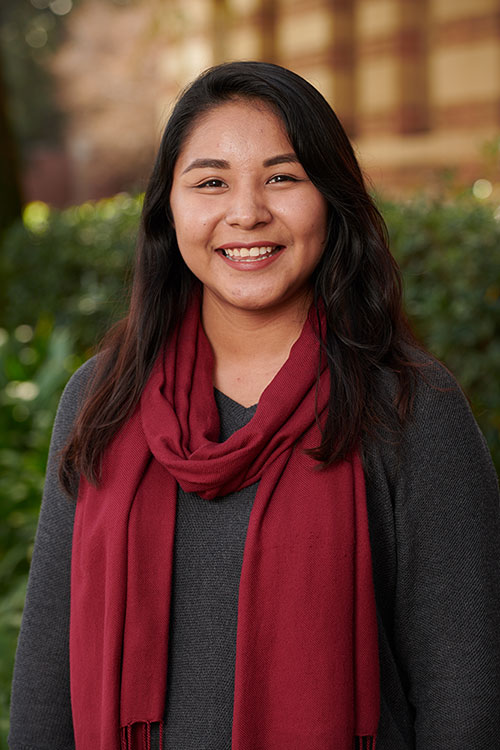When I was looking for a Teacher Education Program, I was looking for a program whose values aligned with mine.
I don’t see teaching as a job. I see teaching as part of who I am and as a way to enact change in this world.”

TEP offers a California Bilingual Authorization in Spanish during the academic year as part of the two-year credential/Master’s program. This authorization prepares credentialing candidates to teach bicultural and multilingual students in Spanish in dual language, bilingual, or mainstream English classrooms. About a third of all TEP credentialing candidates enroll in this pathway. This pathway is open to students in all credentialing content areas—Multiple Subjects and Secondary; however, fluency in Spanish is required.
TEP also offers an intensive 6-week program during Summer Session A for those interested in Mandarin, French, or Spanish Authorizations.
With a Bilingual Authorization, K-12 educators can teach the subject area(s) covered by their primary credential (Single or Multiple Subject) in two languages. You will learn to develop and implement instruction in bilingual, dual language, and cross-cultural classroom settings. With growing research demonstrating the benefits of bilingualism and bilingual education, the number of dual-language classrooms is rapidly increasing. As a result, teachers who are qualified to teach two languages are in high demand.
UCLA TEP Students seeking a Spanish Bilingual Authorization must demonstrate a range of language competence equivalent to passing the CSET. In addition, while passage of the CSET Spanish is not required, candidates must pass a pre- and post-language assessment as evidence of advanced language proficiency. The pre-assessment is offered during Orientation Week before the start of the Fall quarter. The post-assessment is taken as part of the coursework for 413A.
413A. Lecture 1: Language and Culture (2 units): Practice in listening, reading, speaking, and writing competencies required for bilingual classrooms. Assessment made at the end of the course to determine proficiency of Bilingual Authorization Program candidates.
413B. Methodology for Spanish Language Instruction in a Bilingual Setting (3 units): Examination of models for developing cultural and language skills with K-12 students; practice developing lesson to support K-12 students’ ability to use the Spanish language for real-world and academic purposes in culturally sustaining ways. Consideration of models for teaching educational content in primary language to deliver core curriculum to multilingual students.
413C. Culture of Emphasis: Spanish Speakers in California (3 units): Discussion of cultural commonalities in Spanish-speaking countries and cities (such as Los Angeles); major historical periods and events; values, belief systems, and expectations; migration and immigration; historical and contemporary demography.
If enrolled in this pathway, you will also be expected to complete a minimum of twenty hours of field work in a bilingual classroom.

When I was looking for a Teacher Education Program, I was looking for a program whose values aligned with mine.
I don’t see teaching as a job. I see teaching as part of who I am and as a way to enact change in this world.”